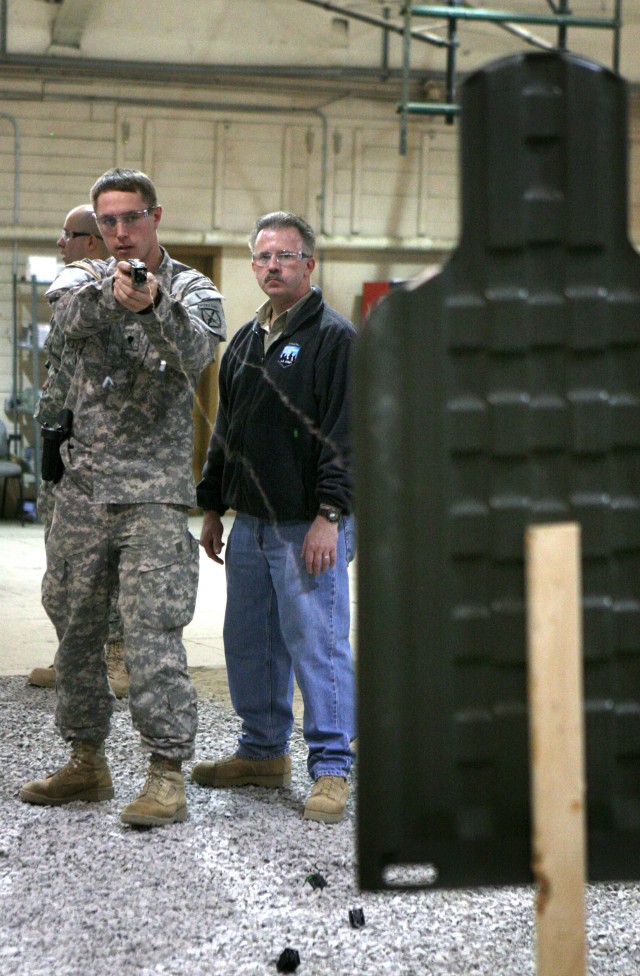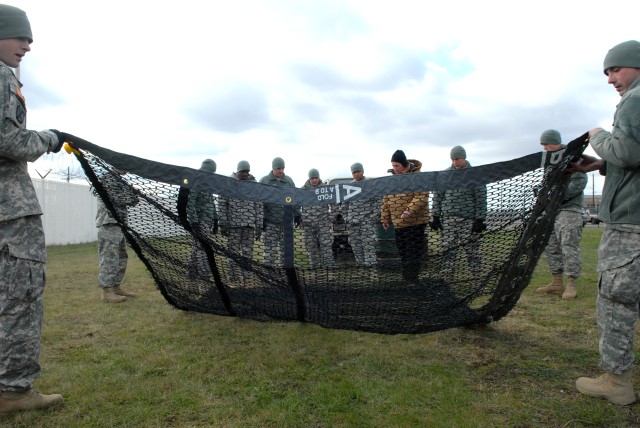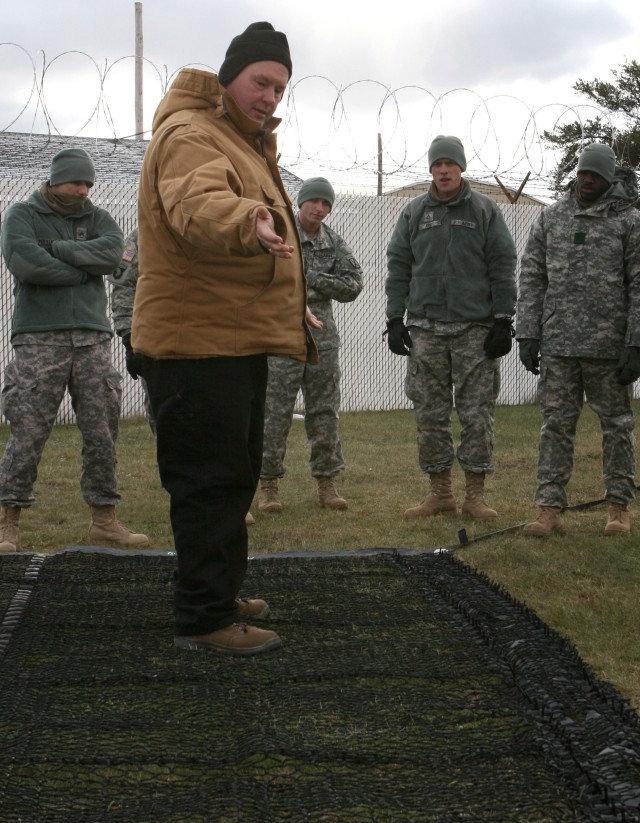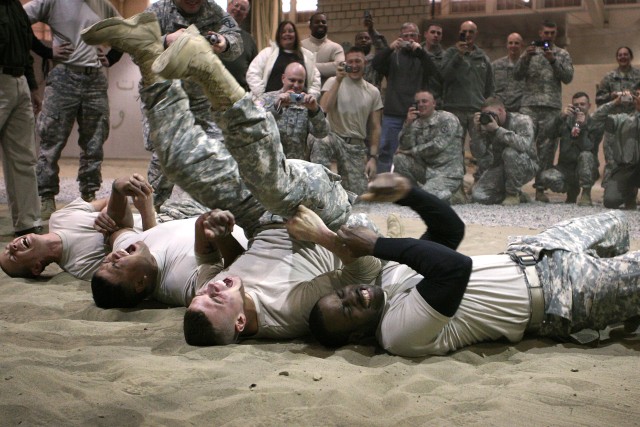FORT DRUM, N.Y. - Soldiers are trained to use non-lethal force as much as possible. But until recently, not every Soldier had "the right mix" of tools and capabilities to meet those goals, an officer said during exercises here last week.
"The more capabilities we give the Soldiers to operate in the non-lethal realm, the less likely they're going to have to resort to lethal force," said Army Maj. Thomas Aarsen, a close combat systems project officer for the Defense Department's Program Executive Office Ammunition.
"[The Army] has been asking Soldiers to do this for a long time, but now they have the tools to do so," Aarsen said during a Non-Lethal Capabilities Set fielding and training for two 10th Mountain Division brigade combat teams.
The Army has been improving its non-lethal capabilities since 2000 in response to U.S. actions in Kosovo. The Army needed something to use before resorting to lethal force, Aarsen said. There were variations of non-lethal packages before. But until now, there hasn't been a system available to Soldiers with the amount of tools the latest set provides, Aarsen said.
"Non-lethal capabilities has definitely been an evolving process," he said. "Technology and equipment continues to keep getting better, and we continue to keep learning more and becoming more innovative. I think now we have about the right mix of what the brigades will need. Though there may be times when they need more or less, it's a good solution at this point."
The fielding, an Army requirement, consists of five modules and comes with a weeklong training on its capabilities and uses, Aarsen said. The modules are based on tactical situations including checkpoint manning, convoy operations, detainee operations, crowd control and dismounted patrols. A Taser package sub-module with 18 Tasers and holsters also comes with the set, he said.
Instructors from the Army's military police school at Fort Leonard Wood, Mo., who developed the training curriculum, travel to the gaining unit's installation to train the Soldiers. During the course, soldiers fire non-lethal ammunitions, such as Tasers and shotgun and grenade launcher rounds filled with rubber pellets.
Soldiers also learn to use the different modules to the capacity that they can teach their squads and platoons what they've learned, Aarsen said. The equipment includes audio-translating devices and the portable vehicle arrest barrier, he added.
The voice response translator is a hand-held electronic device that can be synced to eight users' voices and translate more than 350 phrases in 18 languages. Soldiers can use it to communicate in Arabic, Farsi, Urdu and Pashtun, for example, without an interpreter, Aarsen said.
The package also introduces the portable vehicle arrest barrier, which is basically a large cargo net stored inside a speed bump. Once activated, it can stop a 5-ton vehicle traveling 45 mph by wrapping around the vehicle and locking up the rear axle. Soldiers can stop a speeding vehicle without ever having to expend live ammunition, Aarsen said.
"These capabilities give the Soldiers a lot more tools to use as they progress through the escalation of force," he said. "Now they have ways to actually deal with folks before they have to result to lethal force. The whole focus is to provide Soldiers with more options before they have to use lethal force."
10th Mountain Division's 2nd and 3rd Brigade Combat Teams were the seventh and eighth brigades to receive the set. The set was produced by the Program Executive Office Ammunition and costs just more than $1 million. Fielding began in July to units getting ready for deployment. Every brigade combat team and military police brigade is expected to have the issue in about 18 months, officials said.








Social Sharing